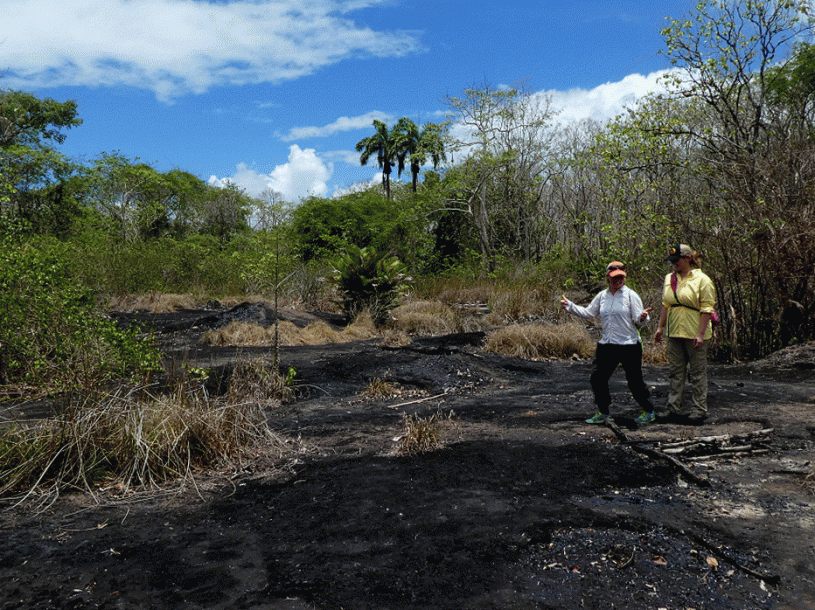Tar Pits on Trinidad
The island of Trinidad has long been known for its rich oil reserves and the world's largest natural asphalt deposit, Pitch Lake. But did you know that its asphaltic sediments have also preserved megafaunal fossils?
Fossils were first discovered on Trinidad in the 1920s during oil exploration, uncovering beautifully preserved insects in "oil sands." Since then, several small international expeditions have uncovered megafaunal remains from oil wells including giant ground sloths and glyptodons, but these collections have yet to be synthesized and put in a geologic context.
Sea levels were lower during the last Ice Age and Trinidad was connected to mainland South America; therefore, its native fauna (including those that are extinct) are similar to neighboring Venezuela. The BREAS Project has traveled to Trinidad several times to start building partnerships and capacity at this very important biogeographic crossroads that bridges the Caribbean and the Americas. Our fossil discoveries will help scientists understand what prehistoric Trinidad looked like and how it may have been used by the indigenous people who first colonized island 7,000 years ago.
